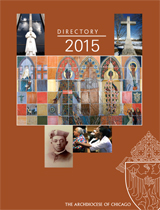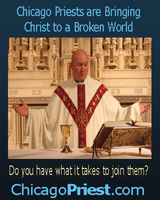February 1, 2009
Mundelein: Man, seminary put village on the map
When the Village of Mundelein was incorporated Feb. 1, 1909, it wasn’t yet the Village of Mundelein. It was the Village of Rockefeller, named for the railroad magnate who is said to have once stopped at the station there.
Cardinal George Mundelein, for whom the village and Mundelein Seminary are both named, was still serving as a priest of the Diocese of Brooklyn, and the University of St. Mary of the Lake, the parent institution of Mundelein Seminary, was dormant.
But as the village celebrates its centennial this year, its activities will include the university and seminary that put it on the map, as it were, and honor the prelate who gave it its name.
“The seminary kind of put us on the map,” said Michael Flynn, the assistant village administrator.
Within a year of incorporation, the village had changed its name to Area, based on the acronym of “ability, reliability, endurance and action,” which were the principles of the then-thriving Sheldon Business School that operated on the land that is now the home of the university.
By 1917, the business school and a property subdivision plan were foundering, and the pastor of St. Joseph Parish in neighboring Libertyville brought the property to the attention of archdiocesan officials, who were looking for a site for a new major seminary—a project dear to the heart of Cardinal Mundelein, who had been named Archbishop of Chicago in 1915.
A deal was struck for the first 172 acres in early 1918, and more parcels were added to the site over the next two years. Plans for construction were approved in 1920, and the seminary opened with 45 students in temporary quarters in the fall of 1921. The following February, the students moved into the new seminary buildings—which comprise nearly all the buildings still on campus today.
“This institution sprung into existence fully formed,” said Father Thomas Baima, the university provost.
Two years later, in 1924, Archbishop Mundelein was elevated to Cardinal Mundelein, and the village, looking for a more vibrant image, decided to adopt the name of this “energetic and visionary” religious leader, according to the village’s Web site.
“He was a little reluctant,” said Dottie Watson, the president and curator of the Historical Society of Fort Hill Country. “It wasn’t until some public figures went to him and asked that he agreed.”
In gratitude, the cardinal, who had recently bought a fire truck for the seminary, bought the first fire truck for the newly formed Mundelein Fire Department. In honor of the anniversary, the village is trying to recover the fire truck from the collector who now owns it.
Not lost on its cardinal, Baima said, was the fact that the village’s fire truck would be available to help at the seminary in the case of a large fire, and vice versa.
Hundreds of thousands of people got their first glimpse of the then-tiny village in 1926, when a half-million people trekked to the seminary from Chicago as part of the 28th International Eucharistic Congress.
The spirit of cooperation survives, according to Baima and Flynn.
The Mundelein Fire Department recently sank a car in the St. Mary’s Lake on campus to practice water rescues, and it used an old barn on the grounds for a controlled burn years ago, Flynn said.
Various village commissions and organizations have held events at the university, including the 50th anniversary dinner of the Historical Society of Fort Hill Country in 2006. For the centennial, the university auditorium will host an organ concert May 30, and a community banquet Oct. 17.
Each year, the university hosts a Christmas concert in its chapel for community members.
“It’s a tradition for some families,” Baima said, “Christmas wouldn’t be the same without it.”
Watson said that people take advantage of the peace and quiet of the Chapel of the Immaculate Conception, which, along with the library, is open to the public during the hours the seminary is accessible to the public.
“It’s so peaceful,” said Watson, a Presbyterian. “It’s a good place to meditate.”
Flynn is a parishioner at Santa Maria del Popolo, the village’s Catholic Church, named for Cardinal Mundelein’s titular see.
While, as a religious institution, the university pays no property taxes, it still is a major institution in the community, with about 250 employees, 187 full-time seminarians and roughly 2,000 students in all programs, and about 13,000 people expected to pass through its conference center this year, Baima said.
As University of St. Mary of the Lake has taken on responsibility for formation of deacons, lay ecclesial ministers and others not studying for the priesthood over the last decade or so, there has been more interaction between it and the village. The relationship remains extremely cordial, he said.
Watson said it’s hard to separate the village from the university and seminary.
“As far as the community is concerned,” she said, “it’s because of the seminary that made the village what it is today. Otherwise we would still be a little town …“
“... that time forgot,” said Flynn, finishing her sentence.
 Catholic
New World - Newspaper for the Archdiocese of Chicago
Catholic
New World - Newspaper for the Archdiocese of Chicago Archdiocese of Chicago Directory
Archdiocese of Chicago Directory Oficjalne wydawnictwo Archidiecezji Chicago w języku polskim
Oficjalne wydawnictwo Archidiecezji Chicago w języku polskim